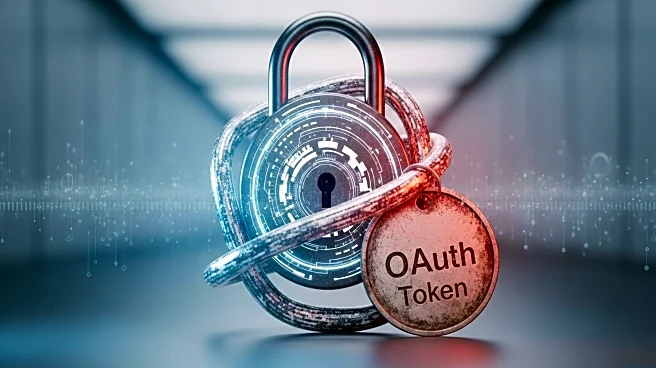What's Happening?
Recent breaches involving SalesLoft and Drift have exposed vulnerabilities in fourth-party integrations, particularly through legacy OAuth tokens. Drift, historically integrated with Salesforce and Google Workspace, was acquired by SalesLoft in February 2024. Attackers exploited OAuth tokens linked to Drift to access Salesforce instances and some Google Workspace accounts. These tokens, potentially dormant for 18 months, underscore the risks associated with inherited security credentials in mergers and acquisitions. The breaches did not occur directly through SalesLoft or Drift, but through the complex web of integrations and legacy permissions that remained active.
Why It's Important?
The breaches underscore the importance of robust security measures in managing OAuth tokens and other integration credentials. As organizations increasingly rely on interconnected systems, the risk of fourth-party vulnerabilities grows. This incident highlights the need for zero-trust security models that verify every action, regardless of the trust chain. Companies must conduct 'OAuth archaeology' to identify and manage active tokens, ensuring they do not become points of exploitation. The education sector, among others, faces significant risks from insider threats and external attacks exploiting these vulnerabilities.
What's Next?
Organizations are likely to reassess their security protocols, focusing on the management of OAuth tokens and integration permissions. This may involve implementing stricter token rotation policies and conducting regular audits to prevent similar breaches. Companies involved in mergers and acquisitions will need to prioritize security due diligence to address inherited vulnerabilities. Stakeholders, including cybersecurity experts and industry leaders, may push for more comprehensive guidelines and standards to mitigate fourth-party risks.
Beyond the Headlines
The breaches reveal deeper implications for cybersecurity practices, particularly in the context of mergers and acquisitions. As companies integrate new systems, they must consider the legacy security credentials that come with them. This incident may prompt a shift towards more proactive security measures, emphasizing the importance of understanding and managing the complex web of integrations that modern businesses rely on.











